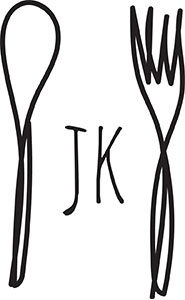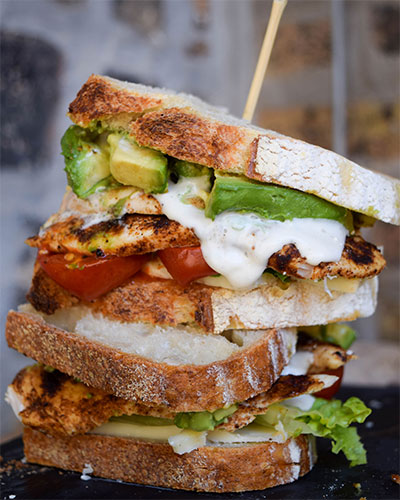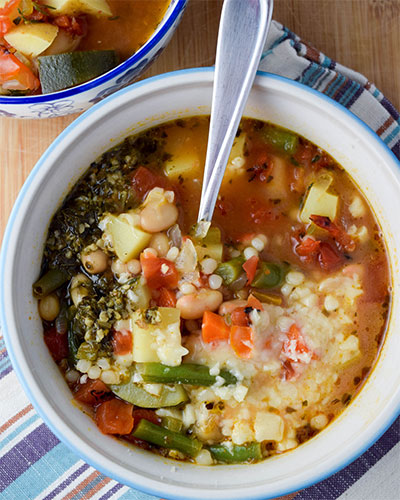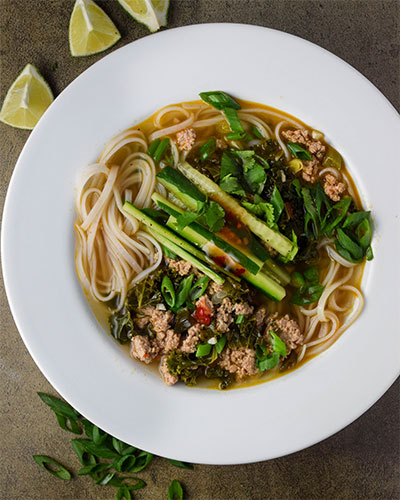Hearty Vegetable Salad
You know when you get sucked into the lists on Buzzfeed or the random news stories on Yahoo and you come across a terrifying headline that says “Top 10 Foods You Should Never Eat Unless You Want to Suffer A Painful Death”. Either out of curiosity or panic you click on the link to see how you shape up. Unsure whether your life is full of terrible decisions or if you can click away with swagger that that you are adulting like a rock star you can’t help but take a look. By the end of the list you either determine it is completely not true (because you eat everything on the list and are still alive) or you are scribbling a grocery list out of fear you may not make it until the end of the day. For some reason I’m such a sucker for these lists. I’m lured in every time. And I’m surrounded by knowledgeable research all day at work. I work for the Academy of Nutrition and Dietetics, a membership organization of dietitians. They would shake their heads at my browser history!
If somebody asked me to write a list of “Foods to Eat That Taste Good and Won’t Cause You to Suffer a Painful Death”, this salad would be on the list. Primarily because it tastes really good, but also because it’s loaded with nutrient rich foods. The combination may be a stretch from your normal salad, but you already know how to make that salad! No dressing required which is usually the no-no of salads. The hummus, lemon juice and creamy avocado take the place of a dressing. Each vegetable brings its own distinct flavor. Best eaten at room temperature this recipe is perfect for lunch ofrdinner. I recommend you add it to your “I’m Going to Make This Recipe” list.
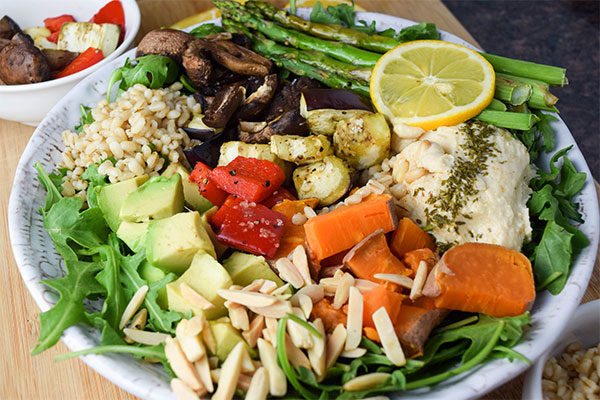
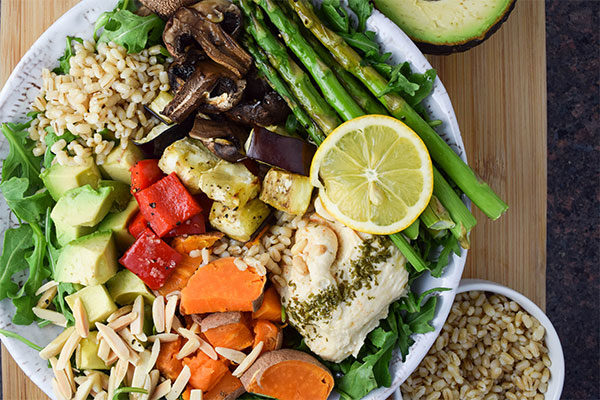
Hearty Vegetable Salad Recipe
Makes 1 bowl; easily double for 2.
Ingredients
- 1/4 cup pearl barley
- 2/3 cup water
- 1 sweet potato
- 6 asparagus stalks
- 1/2 cup eggplant, cubed
- 1/4 of red bell pepper, diced in large pieces
- 3 baby portabella mushrooms, sliced
- 1/2 avocado, diced
- 1 cup arugula
- 1/3 cup hummus
- 1 Tbsp almond slivers
- 1 lemon
- Olive oil
- Kosher salt
- Black pepper
Directions
- Preheat the oven to 350.
- Add 1/4 cup barley to a small sauce pan. Add 2/3 cup of water and bring to a boil over medium heat. Cover and reduce to low and simmer for 20-25 minutes. (Check that all of the water is absorbed.)
- Cook 1 sweet potato in the microwave for 4 minutes (until a fork easily pierces through the potato). When cooled, cut the potato into chunks.
- Prepare the vegetables for roasting:
- Remove the tough ends from 6 stalks of asparagus.
- Remove the stem end from the eggplant and cut two, 1-inch slices. Dice slices into cubes into 1/2 cup.
- Cut a 1/4 of a red pepper into large pieces.
- Slice 3 baby portabella mushrooms.
- Line a baking sheet with foil. Add the asparagus, red pepper, mushrooms and eggplant to the baking sheet. Toss with a drizzle of olive oil, kosher salt and black pepper. Spread in an even layer and bake in the oven for 12-15 minutes.
- Cut the avocado in half and dice one of the halves into cubes.
- In a bowl or plate, spread 1 cup of arugula. Spoon 1/3 cup of hummus on top. Add the avocado, roasted vegetables, 1 Tbsp slivered almonds and barley. Top with a squeeze of fresh lemon juice.
This salad works best if you give the sweet potato and roasted vegetables a chance to cool before adding them to the salad. They can be warm, but they taste best mixed with the other ingredients if they are not straight from the oven.
One of my favorites things about this salad is that you can skip the salad dressing. The hummus, lemon and creamy avocado in essence become the dressing. I prefer to scoop a little of the hummus on my fork and add on a mouthful of veggies. After you make a dent in the salad you can give it a good ole’ fashion mix to combine everything.
You can skip the barley or substitute it for another grain or beans such as chickpeas. I like a grain because it makes the salad more filling. You may be wondering whether you should use hulled or pearl barley. Hulled barley has had the tough, inedible outermost hull removed but still retains its bran and endosperm layer. It is the most nutritious of the two and can be considered a whole grain. It’s nuttier and chewier than pearl barley. Pearl barley has been processed to remove the bran and endosperm layers, which results in a pale, creamy-colored grain. It is less chewy and cooks faster than the hulled variety, but has less fiber, is less nutritious, and is not considered a whole grain. You may be more familiar with pearl barley as it is the version often used in soups or risotto because it releases starch as it cooks. Either version will work in this recipe. I use the pearl version because it cooks faster.
